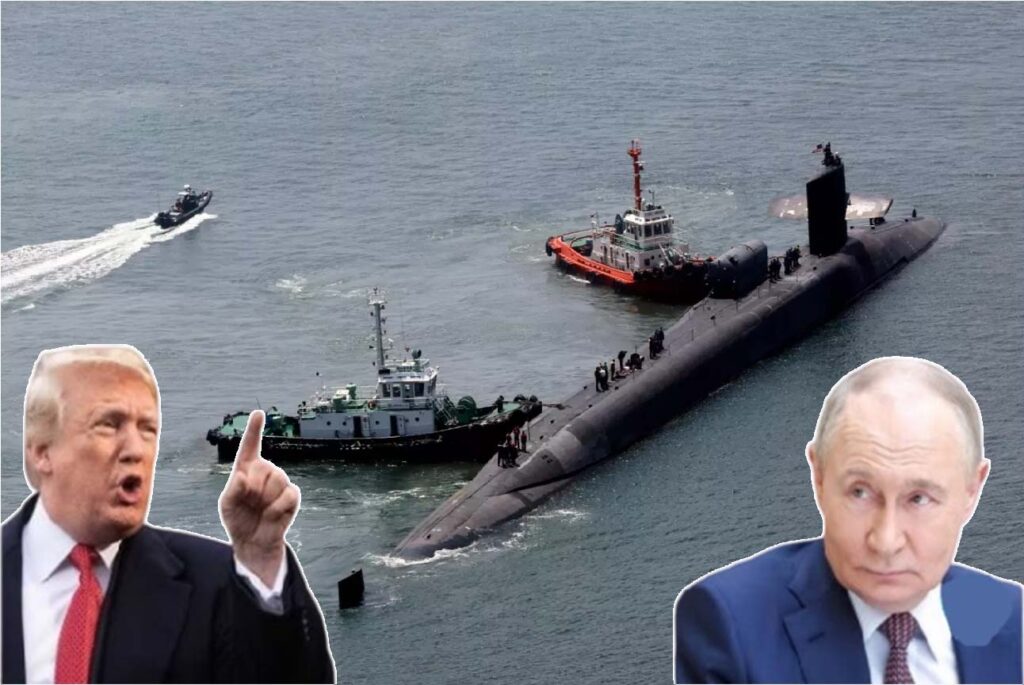
- The President of the United States, Donald Trump, recently announced via Truth Social that he had ordered two nuclear submarines to be stationed “near Russia.”
- Trump has threatened and targeted Russia’s economy to pressure and coerce President Vladimir Putin to terminate his “Special Military Operation” in Ukraine and reach a ceasefire deal.
- In response to a U.S. ultimatum, Medvedev warned that it was a “step towards war” and hinted at the reinstatement of Russia’s Soviet-era nuclear strike capabilities through a “dead hand” threat.
- The unfolding rhetoric of non-contact warfare, submarine patrols, and nuclear threats signifies a new form of hostility between the world’s two largest nuclear powers.
The world’s two powers with the highest nuclear capabilities are going head-to-head once again. The President of the United States, Donald Trump, recently announced via Truth Social that he had ordered two nuclear submarines to be stationed “near Russia.” Trump made this decision in response to the remarks made by the former Russian President Dmitry Medvedev, who is currently serving as the Deputy Chairman of the Security Council of the Russian Federation. This deployment by the United States signals a newly hardened foreign policy toward Russia and marks a new phase of deterrence in global geopolitics.
The trigger for this move by the United States was a public comment made by Dmitry Medvedev, which was called ‘highly provocative’ by Trump. Medvedev’s post on X stated, “each new ultimatum is a threat and a step towards war”. The US didn’t let this statement by Russia’s former President slide. Trump has threatened and targeted Russia’s economy to pressure and coerce President Vladimir Putin to terminate his “Special Military Operation” in Ukraine and reach a ceasefire deal. Trump issued Moscow a 10-day ultimatum to reach a ceasefire in Ukraine, warning that failure to comply would result in further sanctions. By doing so, Trump has effectively launched an economic war against Russia, which is already at war with Ukraine. Medvedev responded by reiterating that each new ultimatum was a threat and a “step towards war.” He further warned the U.S. of a “dead hand threat,” which, as speculated by many military analysts and experts, was Medvedev’s reinstatement of Russia’s Soviet-era nuclear strike capabilities.
With a former Russian President and the current Deputy Chairman of the Security Council of the Russian Federation hinting towards nuclear powers in existence, Trump called in the nuclear submarines to be repositioned in necessary strategic regions, in case what Trump called “just in case foolish and inflammatory statements are more than just that. Words are very important and can often lead to unintended consequences, I hope this will not be one of those instances”.
Though the Pentagon and the US Navy have not provided any comments, President Trump, who is also the Commander in Chief of the Armed Forces, ordered nuclear submarines to be stationed but did not reveal the position of the submarines. Trump also did not clarify whether these submarines are nuclear-powered or whether they are submarines carrying missiles that have nuclear warheads.
While the details of the operation remain undisclosed, this move by the US reflects an essential component of strategic deterrence and the possibility of escalation between the two nuclear-powered countries. This incident can also be regarded as a “déjà vu”, given the history of the Cold War between Russia and the U.S. The Cold War rhetoric unfolding here concerning non-contact warfare threats, submarine patrols and nuclear threats is a clear sign that hostilities are taking a new form between the two largest nuclear powers in the world.
Vibha Hareesh has a Bachelor’s Degree in International Relations from Jindal Global University. She has a strong interest in geopolitics, international relations, and security studies. Views expressed are the author’s own.
